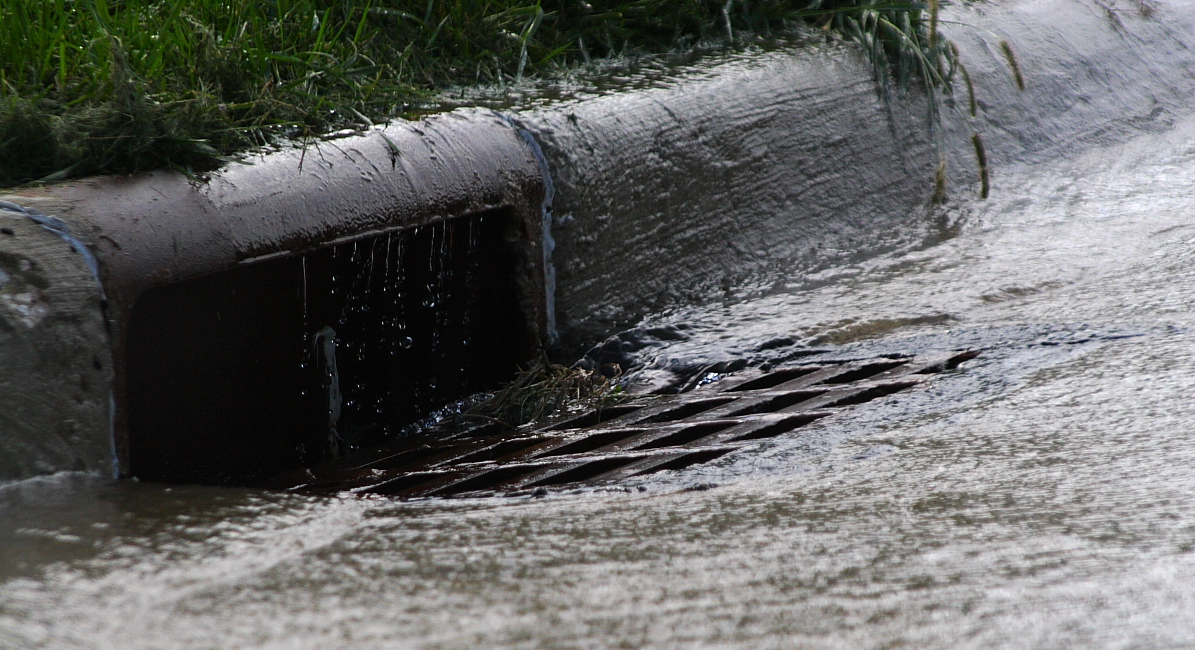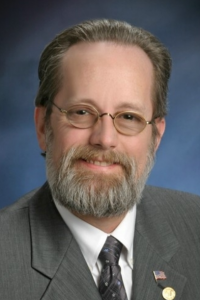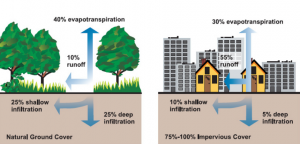
The 2017 Regional Stormwater Summit
Did you know that Michigan’s Oakland County has more lakes than any county in the entire state?
Oakland County Water Resource Commissioner Jim Nash says more than 1200 lakes dot the region northwest of Detroit. And that fact, along with changing weather patterns and increased development, is why the way his county deals with stormwater is increasingly important.
It’s also why this year’s 2017 Regional Stormwater Summit which will take place this coming Friday, October 20th on the Southfield Campus of Lawrence Technological University takes on a new kind of urgency.
(Stormwater is defined as “surface water in abnormal quantity resulting from heavy falls of rain or melting snow.”
Runoff is defined as “water from rain or melting snow that flows over the surface of the ground into streams.”
Green Infrastructure is defined as “a network providing the ‘ingredients’ for solving urban and climatic challenges by building with nature. It mimics the natural infiltration of rainwater into the ground, to limit runoff from impervious surfaces, like roads, parking lots and and roofs)

Jim Nash, Oakland County Water Resources Commissioner, courtesy of oakgov.com
Nash, who has the responsibility of planning, developing and maintaining designated surface water drainage systems in the second most populous county in the state tells Great Lakes Now, “Stormwater is one of the biggest water quality issues facing Michigan.”
Nash says, “The Clean Water Act forced companies and wastewater treatment plants to clean up their pipes and their pollution.” But he says some businesses and residents still don’t realize the impact their own behavior can have on stormwater systems which can pollute the water that runs into all those inland lakes, and eventually can make its way in to the Great Lakes.
“Oil on roads, brake pad dust. Goose poop. Lawn, crop and garden fertilizer. Dog leavings: it all goes into the water”, says Nash. “That brings nutrients and bacteria that eventually runs into the water and makes algae grow.”
He says the answer to these problems is green infrastructure, to limit what goes into storm drains.
“The more water we can keep from getting into storm drains, the better”
“We’re trying to mimic the way natural soils absorb water,” Nash tells Great Lakes Now. “The more water we can keep from getting into the storm drains, the better. If we can do this, we can have less pollution and less flooding.”
Nash adds it isn’t just about the quality of water. He says, “polluted waters are bad for the economy.”
Nash is encouraging Oakland County residents, municipalities and business owners as well as citizens all across the Great Lakes to take responsibility for their own stormwater management, and he’s trying to think of creative new ways to help them pay for it, too.
“We’re encouraging people to make changes so we won’t have to do as much in the future,” says Nash. ”We are trying to make it easier for local communities to pay for stormwater improvements, too.”
Nash says Michigan is one of the only states where it’s difficult to create a stormwater utility because of a court decision that defined the difference between a fee and a tax.
Right now, Nash says people pay for county stormwater management through property taxes, but he says he’s looking at new ways to reward people for making changes on their property that improve their own stormwater management.
“We need to educate folks”
Nash says in his 5 years as Commissioner, he’s seen water quality problems of all kinds, beach closings, and bacterial blooms, and all these issues are related to storm water run-off.
One big problem, says Nash: “people who have grass yards that go right up to the water’s edge. Fertilizer will go right into the water. We are encouraging people to put in buffers to stop the rain from coming off of the fertilized lawn into lakes and streams and stormwater drains,”
Nash says things are improving. “I’m seeing more and more people putting in buffers. That’s going to save a lot of our waters.” But Nash says more needs to be done.
“People need to understand,” Nash says. “We need to educate folks.”
Some of it is easy, says Nash. “Whenever you go to a hardware store, make sure there are “water friendly fertilizer” stickers on the fertilizer you buy.” (That means fertilizer without phosphorous.) The amount of phosphorous, Nash says, “should always be zero! Phosphorous is one of the nutrients that’s always bad for water. Avoid phosphorous.”
These issues and much more will be discussed at the upcoming 2017 Regional Stormwater Summit hosted by Water Resources Commissioner Jim Nash and Pure Oakland Water. It begins at 9am on October 20th with featured Keynote Speaker Helen Noehammer from Ontario who pushed through the plan to create the largest municipal stormwater utility program in Canada. She is the City of Mississauga’s Director of Transportation and Infrastructure Planning. Speakers include Dr. Donald Carpenter, Professor and Director of The Great Lakes Stormwater Management Institute at Lawrence Tech, Ford Motor Company’s Matthew Tunnard, the Huron River Watershed Council’s Rebecca Esselman, Clinton River Watershed Council’s Eric Diesing and OHM Advisor Jeannette Patterson.
There will be presentations on low impact development technologies, green infrastructure, funding opportunities, legislative updates, and asset management plans as well as a free learning session which is open to the public focused on how homeowners can practice green infrastructure on their own property at 3 p.m. The summit ends at 4 p.m.
For more information or to register, go to pureoaklandwater.org/events





